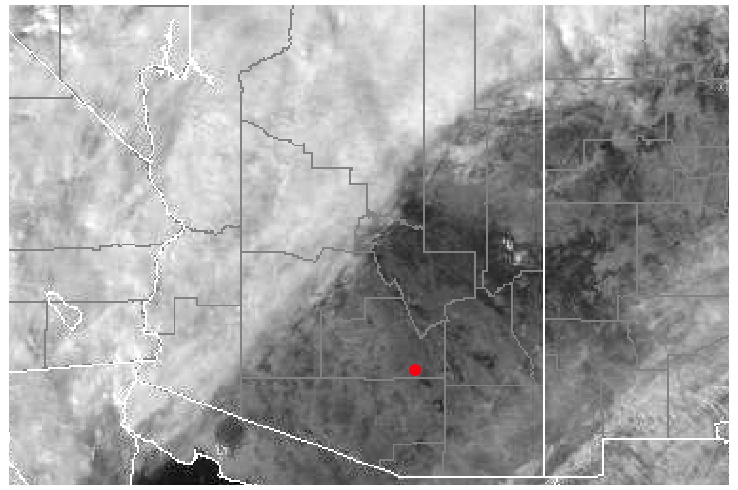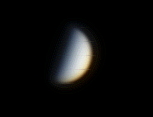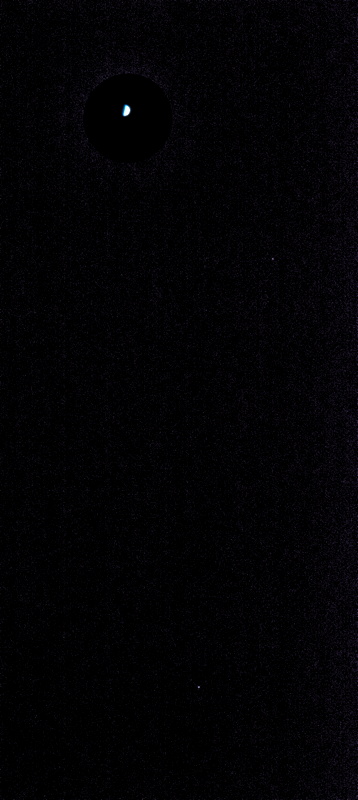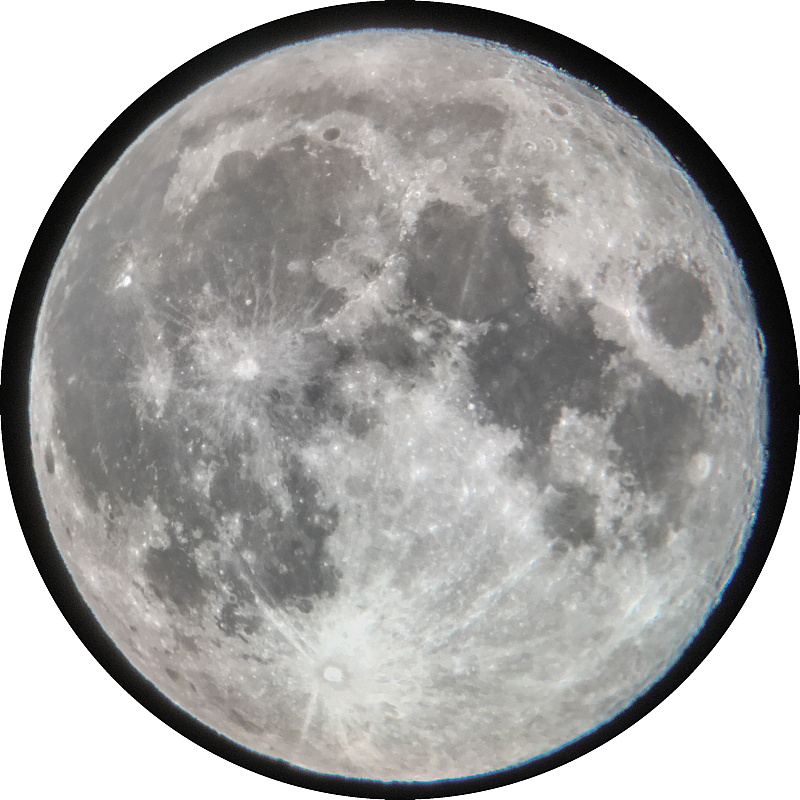Venus-Neptune 0.4° Conjunction, Full Moon
Posted: 13 January 2017
Cloudy skies were forecast for Thursday, 12 January 2017, but fortunately the forecast was wrong. A thin area that was cloud-free was over Cassiopeia Observatory as sunset approached, as seen in this NOAA visible satellite image (the red dot is approximately the location of the observatory):

That would allow me to observe and hopefully photograph the close conjunction of the planets Venus and Neptune. They would be 0.4° (less than a Full Moon diameter) apart.
|
Open: Thursday, 12 January 2017, 1759 MST Temperature: 68°F |
Session: 1059 Conditions: Partly cloudy |
Equipment Used:
12" f/8 LX600 w/StarLock
Wired AutoStar II handset
2" 24mm UWA eyepiece
2" 30mm eyepiece
2" 2X PowerMate
Camera:
D7200 DSLR
iPhone 6s Plus
When I opened the observatory the band of clouds was visible along the horizon from the southwest to the north. The area where Venus and Neptune were located was clear.
Besides the close conjunction of Venus and Neptune (0.4°), Venus was at its greatest Eastern Elongation this night.
1804 MST: LX600 ON, StarLock OFF, High Precision OFF.
Viewed Venus, 102X. Two minutes later viewed Neptune, also in the same field-of-view with the 2" 24mm UWA eyepiece (102X). That was neat to observe.
I then began setting up for imaging. Mounted the D7200 DSLR at prime focus + 2X PowerMate. This is a stack of 1830 HD video frames (30 seconds), 60 fps, 1.3X crop factor, 1/800sec, ISO 200:

1835 MST: removed the 2X PowerMate for this prime focus image of Venus and Neptune:

Mouseover or tap on image for labels
The image is a merge of two exposures: 1/640, ISO 1600, for Venus; 1/250sec, ISO 1600, for Neptune.
1841 MST: removed the camera and viewed Venus and Neptune, 102X.
1846 MST: eastern sky brighting from rising just pass Full Moon. The clouds were now approaching the zenith, but Venus and Neptune were still clearly visible.
1850 MST: viewed Venus and Neptune using the Vortex 12x50 binoculars. Neptune was faintly visible in the binoculars.
1855 MST: clouds were now approaching Venus. Viewed M42 (Great Nebula in Orion) and M45 (the Pleiades) using the 12x50 binoculars.
1857 MST: began watching the Moon rise over the hill to the east using the 12x50 binoculars. A slight terminator was visible.
1901 MST: took a final look at the close conjunction of Venus and Neptune, 102X. Then slewed to the Moon. The view at 102X was not great due to the Moon's low altitude in the sky.
Switched to the 2" 30mm eyepiece for this handheld iPhone 6s Plus afocal 81X photo of the Moon:

1910 MST: last look at the Moon, 102X.
|
Close: Thursday, 12 January 2017, 1919 MST Temperature: 55°F |
Session Length: 1h 20m Conditions: Partly cloudy |
Comments are welcome using Email. Twitter users can use the button below to tweet this report to your followers. Thanks.
Cassiopeia Observatory Home Page
Copyright ©2017 Michael L. Weasner / mweasner@me.com
URL = http://www.weasner.com/co/Reports/2017/01/13/index.html
